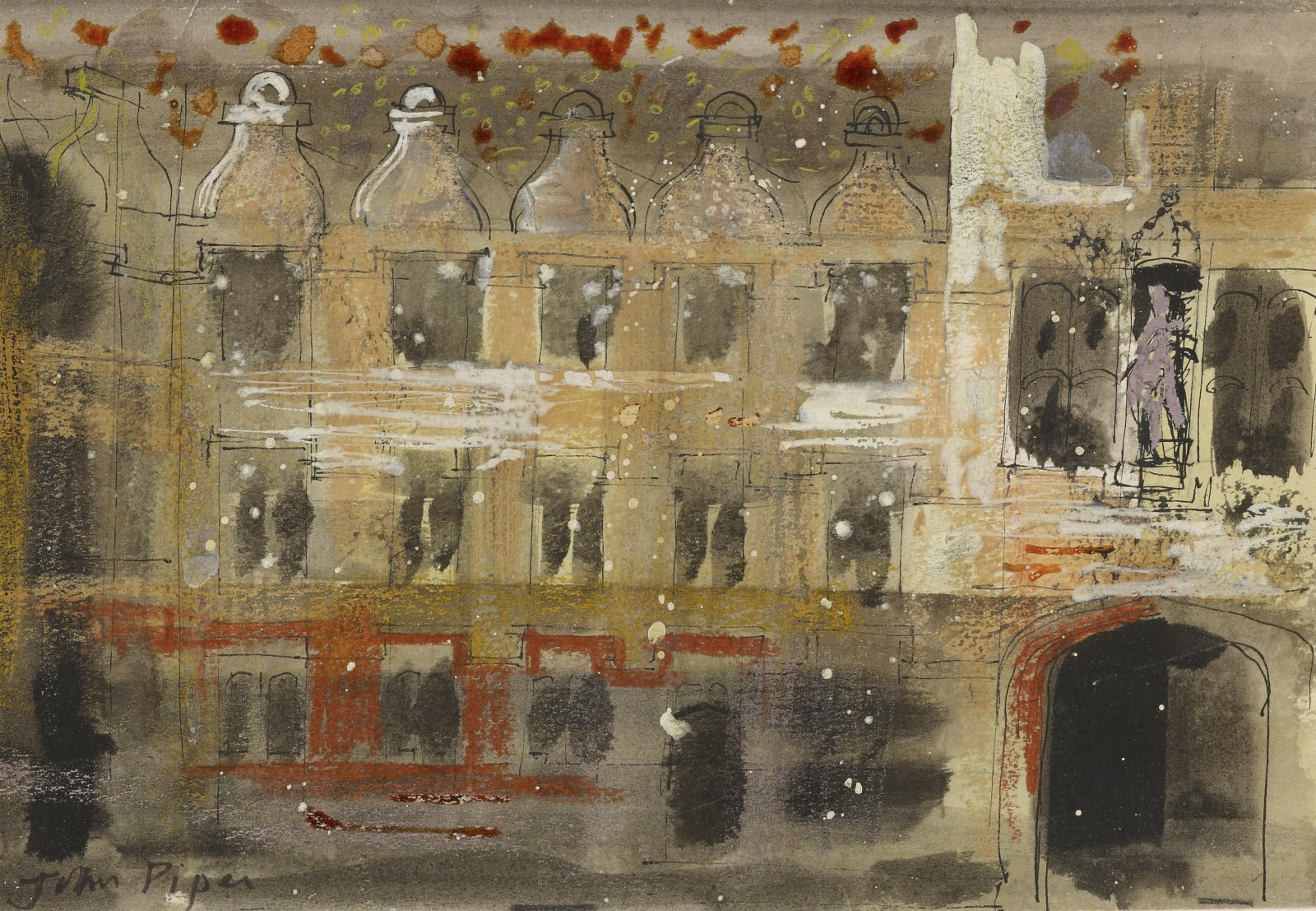
John Piper C. H.
University College, Oxford, 1975
Ink and watercolour on paper
7 5/16 x 10 ¼ in (18.5 x 26 cm)
Signed and dated 1975
Philip Mould & Co.
To view all current artworks for sale visit philipmould.com
This atmospheric painting of University College in Oxford is by John Piper, one of the most celebrated English artists of the twentieth century and arguably one of the greatest architectural painters that ever lived.
Born at Epsom in Surrey, Piper was the son of a solicitor and worked in his father's office until 1928, when he left to study at the Richmond and Kingston Schools of Art, and later the Royal College of Art (1928–9). As a child, he frequently visited Italy, and his poetic depictions of British architectural views resonate with the memory of these early experiences abroad. He became a member of the London Group in 1933, was appointed as Britain’s Official War Artist from 1940 until 1942, and stood as a trustee of Tate twice (1946-52, 1954-61).
In 1938, he had his first solo-show at the London Gallery, which comprised mainly of collage and drawings. After a trip to Paris in 1933, Piper’s briefly fell under the influence of abstraction, a movement prevalent across Europe at the time, but he soon returned to representational painting. He is perhaps best remembered now for his ability in capturing the charming idiosyncrasies of historic architecture; in particular, his romanticised ‘character studies’ of the scenery in picturesque university towns, Oxford and Cambridge.
This atmospheric painting of University College in Oxford is by John Piper, one of the most celebrated English artists of the twentieth century and arguably one of the greatest architectural painters that ever lived.
Born at Epsom in Surrey, Piper was the son of a solicitor and worked in his father's office until 1928, when he left to study at the Richmond and Kingston Schools of Art, and later the Royal College of Art (1928–9). As a child, he frequently visited Italy, and his poetic depictions of British architectural views resonate with the memory of these early experiences abroad. He became a member of the London Group in 1933, was appointed as Britain’s Official War Artist from 1940 until 1942, and stood as a trustee of Tate twice (1946-52, 1954-61).
In 1938, he had his first solo-show at the London Gallery, which comprised mainly of collage and drawings. After a trip to Paris in 1933, Piper’s briefly fell under the influence of abstraction, a movement prevalent across Europe at the time, but he soon returned to representational painting. He is perhaps best remembered now for his ability in capturing the charming idiosyncrasies of historic architecture; in particular, his romanticised ‘character studies’ of the scenery in picturesque university towns, Oxford and Cambridge.
Provenance
Private Collection, UK.Be the first to hear about our available artworks
* denotes required fields
We will process the personal data you have supplied in accordance with our privacy policy (available on request). You can unsubscribe or change your preferences at any time by clicking the link in our emails.